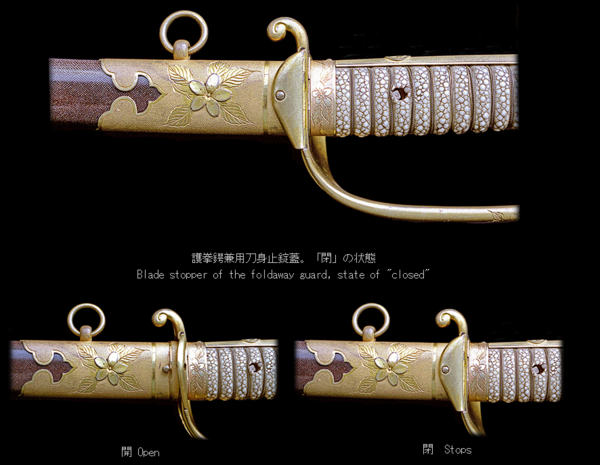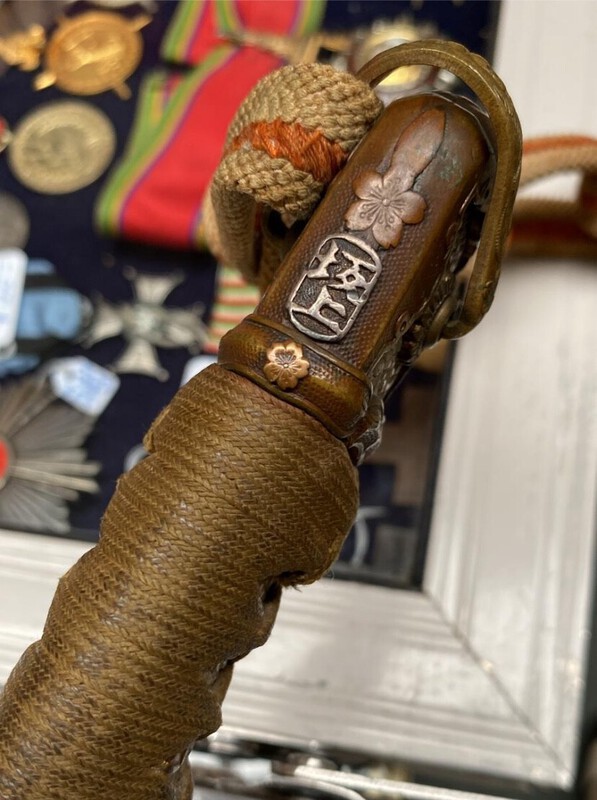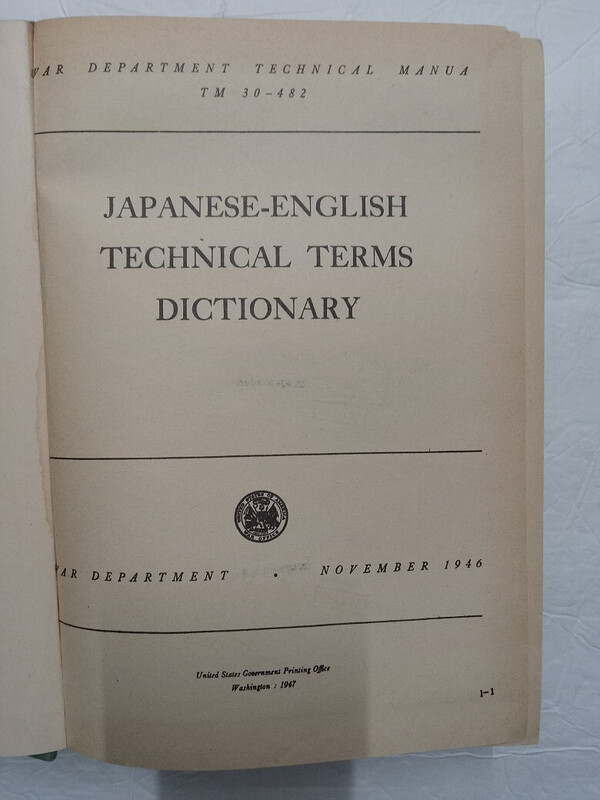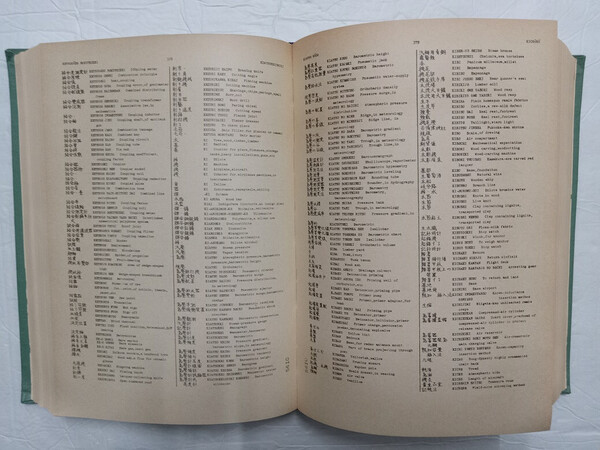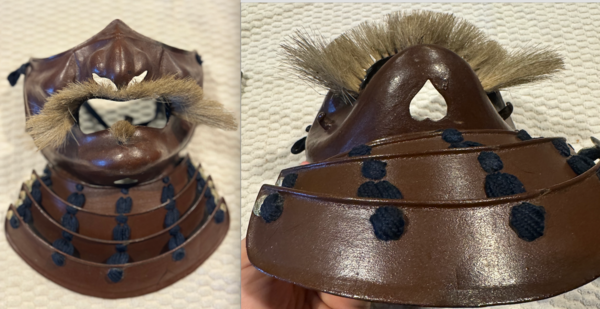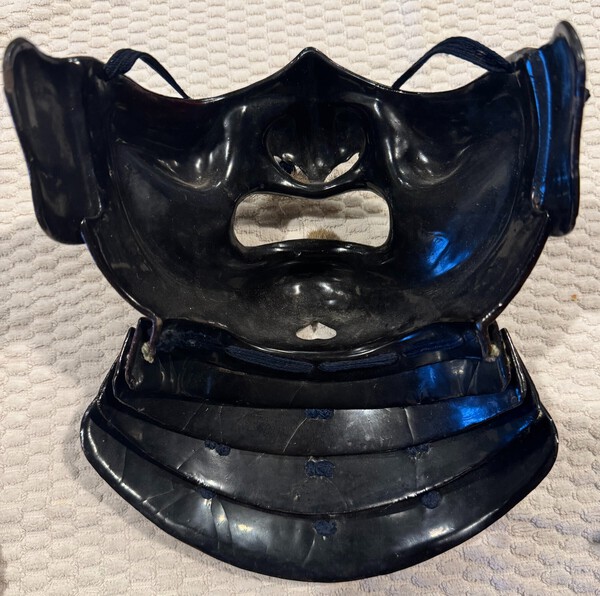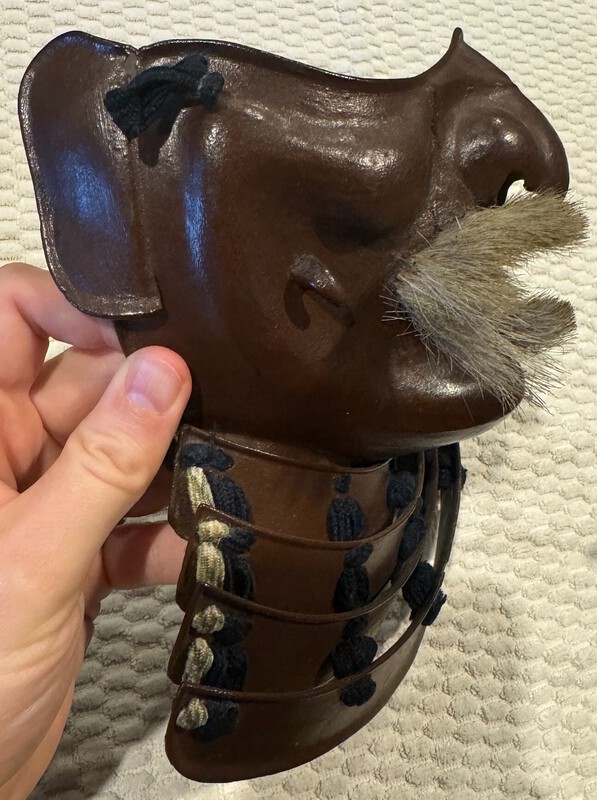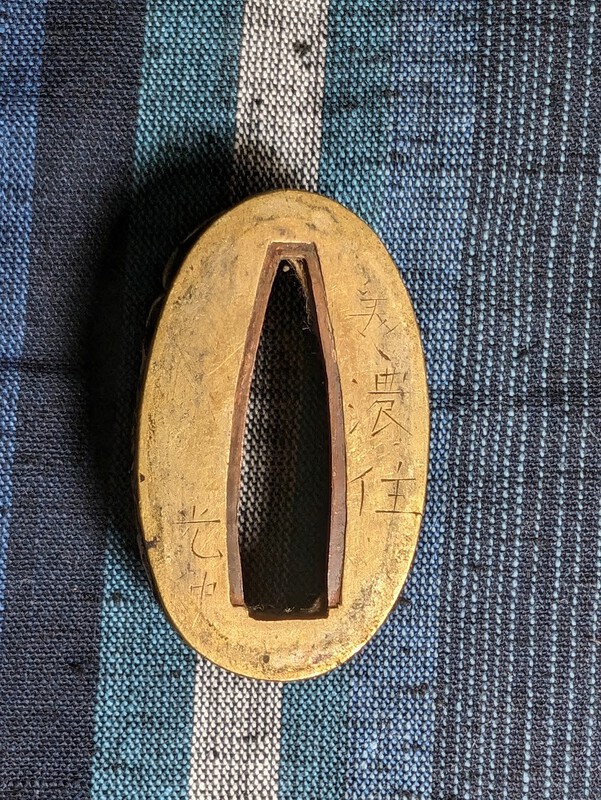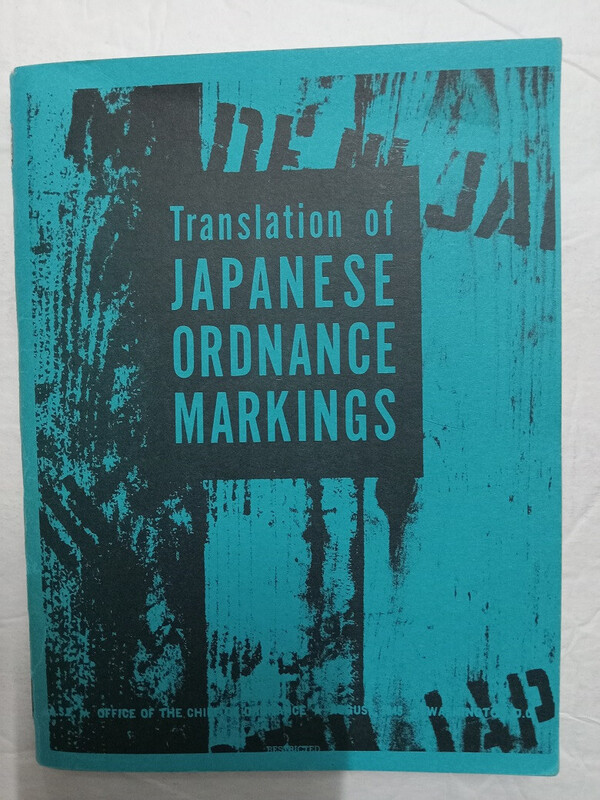All Activity
- Past hour
-
I love the sugata, looks like a very strong stout sword. I know not in polish but what you can see do think jigane/hamon/boshi supports such an attribution? I feel like the mei flow is really good but hard to ignore Jacque’s adroit observations. Can you tell us more about the work?
-
To parrot a topical saying amongst my drinking compadres: "Is green, is good!" BaZZa.
-
Beautiful photos. BaZZa.
- Today
-
美濃住 光沖 Minō-jū Mitsuoki
-
Well, so far, it still appears to be a late war Japanese-made sword. The tsuba (handguard), seppa (spacers), dark same' (rayskin) and small mekugi ana (hole in tang) are all signs of swords made in the last year of the war. Do you not have a scabbard (saya)?
-
Thomas et al, How interesting! I have one. I acquired it many years ago I forget from where. I think someone gave it to me?? Its an original American edition dated 1942 that has 2,280 pages and is 3-1/2 inches thick. The (centered text) title page reads: KENKYUSHA'S NEW Japanese = ENGLISH DICTIONARY (string of kanji) TAKENOBU YOSHITARO GENERAL EDITOR American Edition CAMBRIDGE, MASSACHUSETTS HARVARD UNIVERSITY PRESS 1942 There is a lengthy foreword in English that begins: "The present war has necessitated the publication in the United States of a new edition of Kenkyusha's Japanese-English Dictionary..." I haven't had much recourse to refer to it, but it has been handy on a few occasions. BaZZa.
-

Weird showa-to with seppa latch/lock
PNSSHOGUN replied to GeorgeLuucas's topic in Auctions and Online Sales or Sellers
-
Just going back to Snowy's Mon a couple of posts back. I can see the circle is made up of Fuji wisteria, indicating some link to the huge Fujiwara genealogy, but the inner parts are too blurred in that shot.
-
Not an original rank tassel. Mounts look decent, any idea on the blade?
-
-
Hi John that was quick there is a rank tassel ,not sure if it’s legit but I don’t no any more details I’m asking on behalf of a mate
-
It's a family name: "Sakagami - 坂上". Is there a original rank tassel, or other information on where the sword was captured?
-
-
United States. War Department. Japanese-English Technical Terms Dictionary. TM 30-482. November 1946. Green hardcover, 7 x 10.25 inches, 1,041 pages. Soviet reprint of a Japanese reprint that came out of an East German library. Has a couple of library stamps but otherwise no writing or highlighting. This was the hardest dictionary to acquire of them all. It was not until the collapse of the Berlin Wall that I could acquire one. I have never seen an original American edition in my entire life. They must exist but where did they go? Price is US$90 including shipping within States.
- Yesterday
-
That’s all very attractive, including interesting koshirae and the Tanobe sayagaki—congratulations!
-
I think they they work well as a married daisho. As Alex pointed out though, the difference in metal thickness around the hitsu-ana is the most obvious difference between the two, followed closely by the slightly different shape of the two hitsu-ana. These two differences are probably what makes them not a "true" daisho in my opinion. I think the surface condition between the two is acceptable as there is no guarantee that a daisho would be stored in a daisho kiribako, which leads to the possibility of different rates of storage/environmental conditions (that can subsequently lead to degradation). The tagane ato, if added when fitting (and not as decoration) does not need to be similar, as this can be needed at differing times from multiple fitment activities. Having said that though, if both are fitted at the same time by the same person, I would expect that (like me) they choose the same punch/method/locations? I think the size relationship is also acceptable, being large is typical, and if your have a large Katana guard, you don't want a comparitively miniature Wakizashi daisho guard.
-
There were a lot of compliments on the koshirae and as an update, a worn down mei was found on the fuchi. Can anyone please make it out?
-
Thanks for the comments, Alex, helping to advance the game. The larger one seems to be closer to a perfect ‘maru-gata’ circle. The Tagane hits around the seppa dai are different too. Possibly an owner kept both as alternatives for a particular tachi…(?)
-
In my opinion, this is one of several types of battle arrow-heads. The cross section can be square, but mostly it is rhombic. The YAJIRI for target practice are round and have no NAKAGO (cap type).
-
Kiipu started following WTS Japanese Military Dictionaries
-
United States. War Department. Japanese Military Dictionary. TM 30-541. 29 August 1944. Beige softcover, 4.5 x 6.75 inches, 618 pages, no pictures or illustrations. Dictionary has two parts; Japanese-English and English-Japanese. The top 1.75 inches of the front cover have separated from the spine. See picture. No missing pages, no writing or highlighting. No tears other than the front cover. A good working dictionary. United States. Army Service Forces. Office of the Chief of Ordnance. Translation of Japanese Ordnance Markings. August 1945. Blue softcover, staple bound, 5.25 x 7 inches, 78 pages. No writing or highlighting. Reprint from the mid-1990s. Price for both is $70 with shipping included within the United States.
-
Brian, this post is again in the wrong section! Could you please move it to the military section? Thank you in advanve!
-
Thanks Brian!





